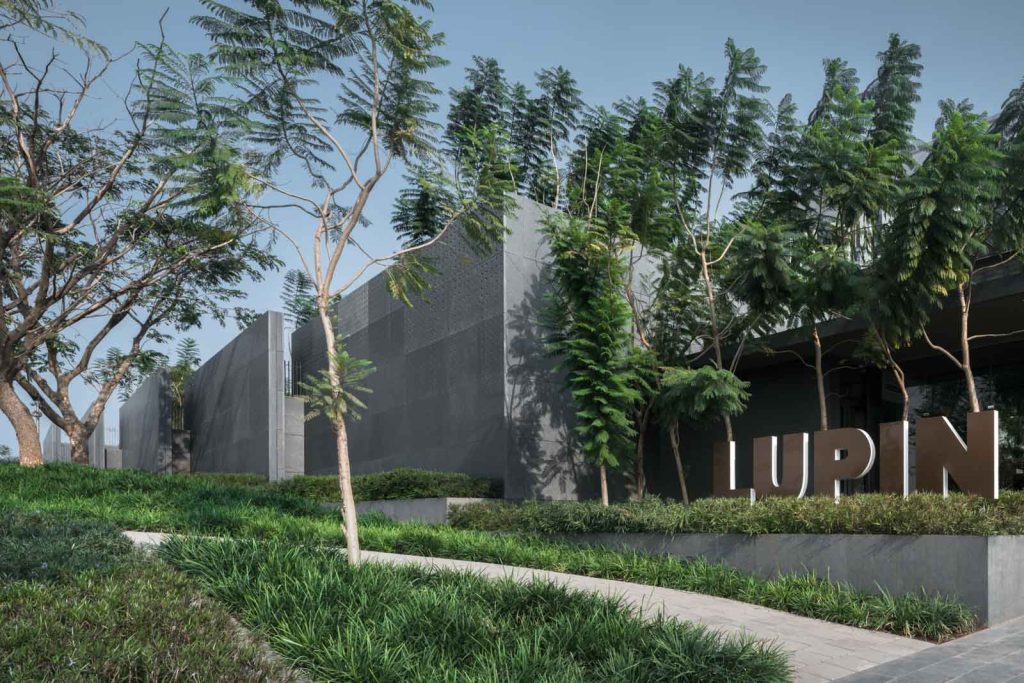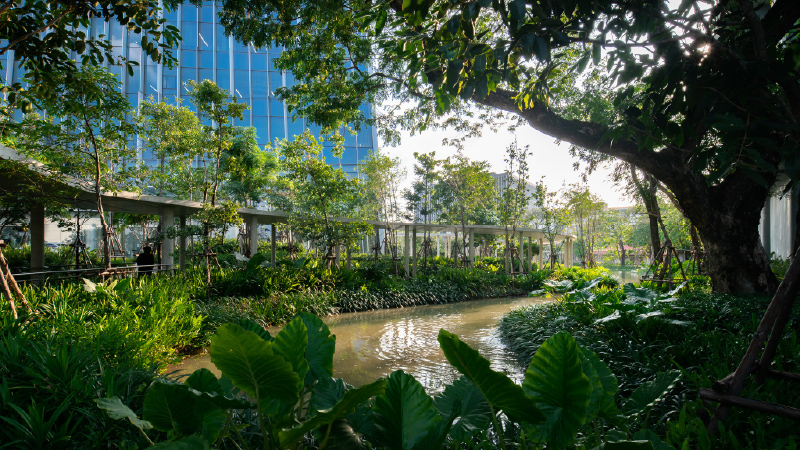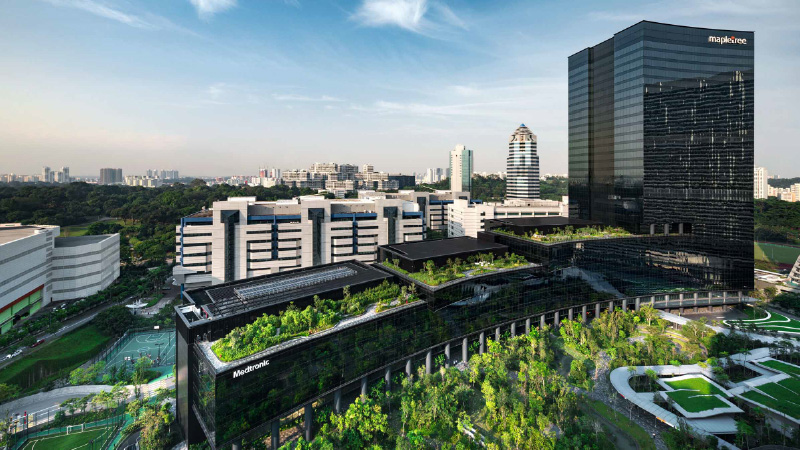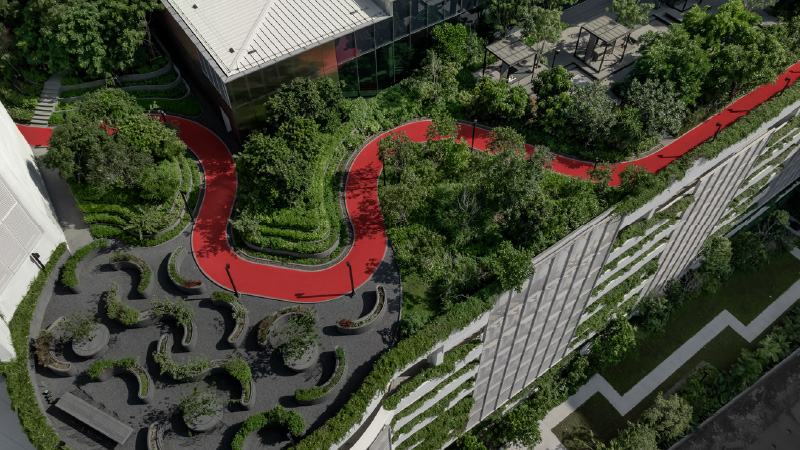Designing Resilience Through Monsoon Landscape
Facing Pune’s extreme climate of dryness and heavy monsoons, Lupin Research Park applies an adaptive landscape strategy that follows the
land’s natural flow. Stepped terrain and gentle slopes help manage water and support the ecosystem. The result is a resilient green campus
with a pleasant microclimate, where employees can connect with nature throughout the day.
Project Information ↘︎
Client & Developer
Lupin Limited
Architect
VA Group
Status
Completed
Landscape Area
18,060.40 sq.m.
Year
2017
Award
- World Architecture Festival (2018)
- LILA Awards (2021)
Design Director
Prapan Napawongdee
Landscape Architect
Katavet Sittikit
Pat Wongkittipat
Krittaya Ngamkamollert
Horticulturist
Tanee Sawasdee
Collaborator
C&S Engineering: Sterling ECS PVT., LTD. Graphic Designer: Thanaphum Thongprasert Photographer: Wison Tungthunya
Pune, India, the locale of Lupin Research Park, is known for its drastic dry climate and heavy monsoon, causing the land to be semi-arid, where little rain occurs in one season and overly compensates in another. This variation in precipitation consequently leads to hostile conditions for the ecosystem to thrive.
Based on India local farmer’s wisdom, we learn how this technique
of employing step grading can help slow down and retain water while preventing
soil erosion on the existing sloped terrains, at the end, allowing efficient
agriculture practice under challenging climate. As a result, this same idea of
stepping and undulating surface is applied to the landscape design and water
management preparation, making the overall project survive and thrive
sustainably under extreme conditions.
Lupin Research Park offers an ecological friendly environment and microclimate,
inviting its employees to gather outside amidst greenery all-day long.
Step Mountain
Lupin’s main entrance is introduced as a main pathway starting from one side of the grand steps, cut across and ramped up to form a mountain shape which negotiates a drastic level difference between the road and the building’s 1st floor. It helps reduce run-off and soil erosion, offers lounging spaces on those steps while committing 1:12 ramp for people with disabilities. Local tree groves and contrasting shrubs are grown through parts of steps to soften hardscape elements. Moreover, by planting a mono-species terrace of local Silver Oaks give a nice clean visual while staying true to the subtropical forest condition.

Rain Garden Corridor
In order to sustain the dense greenery with less watering, this edging zone of Lupin is made lower to receive run-off water from the whole site, including the roof drainage. PVC-based perforated tanks are constructed along the path to collect water during wet season, and slowly release the excessive to adjacent dried-up underground soil via osmosis reaction on dry season. This becomes a rain garden that naturally dampened all year round as a result of sustainable water management, which helps mitigate unusual precipitation as well.
Dense layers of trees varied in sizes and species are also planted along the site boundary, composing a forest-like backdrop and harnessing biodiversity for the campus. Employees can then come out through meandering walking paths, gather privately in timber cabanas and enjoy their times amidst lush and serene nature too.
Lupin Terrace
A large green lawn is created in front of the establishment, where the grand meeting room, a provision for Lupin’s major events, is located. Between the grand meeting room and the lawn, there’re a reflective pond, flowering meadow and amphitheater terrace, together forming a nice cooling space, sometimes used for training sessions. Soft violet flowers from Jacaranda trees around the area produce large panicles and play a pleasant color contrast to the luscious greenery.
Lupin Terrace also offers a subtle transition from the building to the site entrance as the amphitheater terrace is proposed, connecting different ground levels, yet forming a functional space, while the green lawn is terminated with a series of unique staggering retaining walls. Here, they also function as front feature walls seen from the outside public roadway. Once the sun sets, the lighting illuminates the wall and provides safety usage as well as denoting the place where wholesome combination of forms and functions, blending inside and outside can be experienced.
Farm Terrace
At the back of the building beside the canteen is the Farm Terrace, comprising long communal tables topped with trees and edible garden, inviting people to gather outside amidst crafted agricultural patterns. This emphasizes the blurring between interior and exterior, while fostering interaction between employees, nature and their workplace.
Forest Court
Surrounded by the building on 3 sides, the courtyard is an ideal all-day seating area as it is well protected from harsh sunlight and wind. Pocket seats are distributed among groups of trees surrounded by an immense reflective pond. As there are interactive fountains and water features operated, this then becomes an arrival point that enhances microclimate and provides soothing ambience
At the same time, the adjustable interactive water jet also gives flexibility usage according to any chosen mood, date and time or functions, supporting variety in pace of everyday lives of Lupin’s researchers.
Roof Garden
Without restraining greenery only at ground level, the roof garden on the 2nd floor is created. As during the day, employees may not wish to step down to access the main landscape, they can take a quick break here instead and see the overall view of Farm Terrace from above.



